NOTICE: This post references card features that have changed, expired, or are not currently available
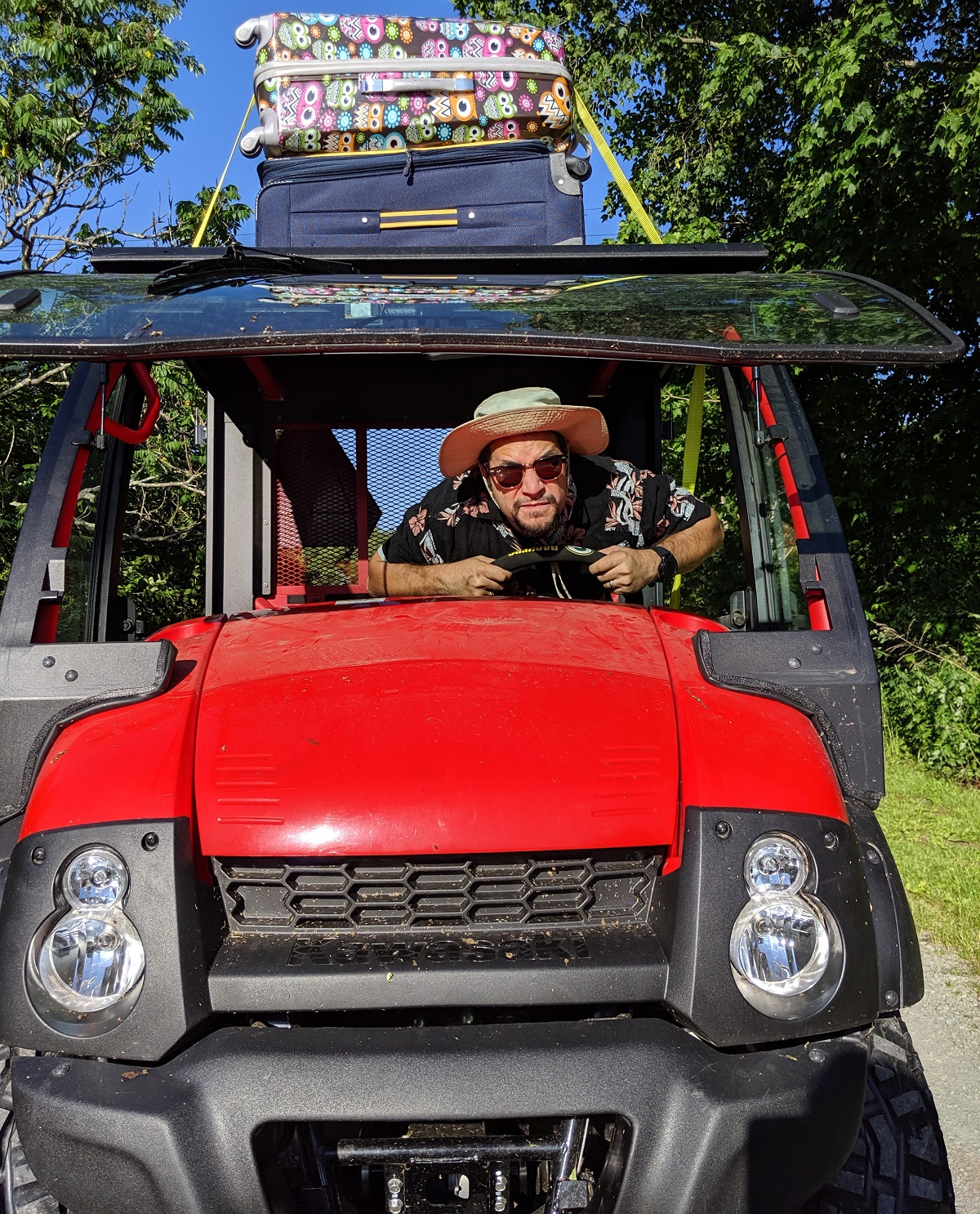
Last week, Nick became the presumed favorite in the 40K to Far Away challenge when he revealed the greatest sweet spot award ever: 7.5K miles each way to Hawaii. That deal requires Turkish Miles & Smiles miles. And, of the three of us, only Nick can easily get those miles by transferring from Citi ThankYou points. Neither Stephen’s Amex points, nor my Chase points are capable of transferring to Turkish.
In response to Nick’s post, a reader name Sam commented “End the 40K competition. Nick hereby has just won it all.”
Not so fast.
I have to admit, Nick’s find has shaken my confidence a bit. I thought I had an easy lock on this competition with the ability to purchase up to $1,000 worth of flights with my 40K points plus $400. But I can’t beat someone who can book 7.5K to Hawaii. Or can I?
Let’s do a little math…
Nick reported being able to book Washington DC to Chicago to Honolulu for 7.5K miles and $5.60. According to gcmap, that route is 4,832 miles. To make the math easier, though, lets round up to 5,000 miles. With Nick’s 40,000 Citi ThankYou points, he could fly back and forth to Hawaii 5 times for 37,500 ThankYou points plus $28 cash. He would then have 2,500 ThankYou points remaining plus $372. To make the math really easy, let’s assume that Nick uses the remaining points and cash to buy one more one-way from Hawaii.
With this fictional scenario, Nick would eke out 6 x 5,000 miles = 30,000 miles in travel.
Of course, Nick won’t really fly back and forth to Hawaii, but it’s a useful target. Can I beat it?
Nested flight deals
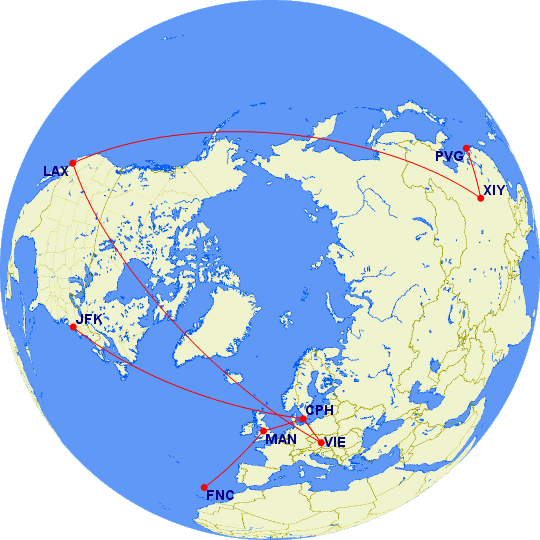
One great way for me to fly as far as possible with my $1000 travel budget is to find great airfare deals and nest them one inside the other. For example, here’s a plan that is actually bookable:
- New York to Copenhagen one-way for $165 (3,856 miles distance)
- Copenhagen to Los Angeles (via Vienna) round-trip for $279 (13,365 miles distance, round trip)
- Los Angeles to Shanghai (via Xi’an) round-trip for $398 (15,235 miles distance, round trip)
- Copenhagen to Madeira Portugal via Manchester one-way for $118 (2,217 miles distance, round trip)
- Total price for airfare: $960
- Total miles flown: 34,673
With this example itinerary, I’d easily beat Nick’s theoretical 30K back and forth to Hawaii trip. Plus, this trip is arguably a lot more interesting. To be clear, Nick is not planning to fly back and forth to Hawaii. And I’m not planning to do the itinerary shown here. This was just an elaborate example to show that it’s still possible for me to beat him despite the amazing 7.5K to Hawaii find.

What about lodging, food, and experiences?
I could book an itinerary like the one shown above, sleep only on red-eye flights, and eat and shower only in airport lounges. But that would suck.
There’s no point in flying 35,000 miles if the plan doesn’t involve actually getting out of the airport to see and experience the world.
In fact, since we will ultimately let readers decide who won the competition, I don’t think that many will vote for the contestant who spent all of their time in airports.
With the itinerary described above, I’d have only $40 remaining to pay for food, lodging, and experiences. While I have ideas for free lodging and free experiences (I’ll post about this later), I’m also planning to make use of my secret weapon…
My secret weapon
Both Nick and Stephen are likely to travel predominantly by transferring points to airline miles and using those miles to book travel. Meanwhile, I’m more and more convinced that my best use of Chase points is to book flights at 1.5 cents per point value. I’ll not only (likely) be able to travel farther than Nick or Stephen, but I’ll be the only one to earn airline miles.
The cheap fares I’ve been looking at won’t earn a lot of miles. In many cases, I would only earn 25% of the miles flown. Depending upon which airline I fly, though, I can do better by strategically crediting the flights to the right partner.
For example, a big chunk of my flying could be on Hainan Airlines. Via the website Where to Credit, I can find how many miles can be earned with various partner airlines:

At first blush, it looks like I should credit my Hainan flights to either Eithad Guest or Virgin Australia since each would earn 50% of the miles flown. For example, if I flew 15,000 miles, I would expect to earn 50% = 7,500 Etihad or Virgin Australia miles. But wait, it’s pretty well known that Alaska Airlines is generous with status matching. If before the trip I status match my Delta Diamond status to Alaska MVP Gold 75K (which I should be able to do), then I’ll earn 68% Alaska miles on these Hainan flights. 15,000 miles flown, then, would result in 10,200 Alaska miles.
Using my secret weapon
I don’t know how quickly miles from flying will post to my frequent flyer accounts. And I don’t know if cheap award flights would be available when or where I needed them. So, I won’t count on using the earned miles to fly farther. If it turns out to be possible, great. If not, I have a backup plan…
Lodging, car rentals, and experiences.
I hate using airline miles for low value rewards like these, but I’m willing to do it to win this competition. Many airline loyalty programs let you use their miles to book hotels or rent cars. Some also offer the ability to book experiences (tours, airport transfers, etc.).
Take British Airways, for example. You can use Avios to book hotels, cars, or experiences:
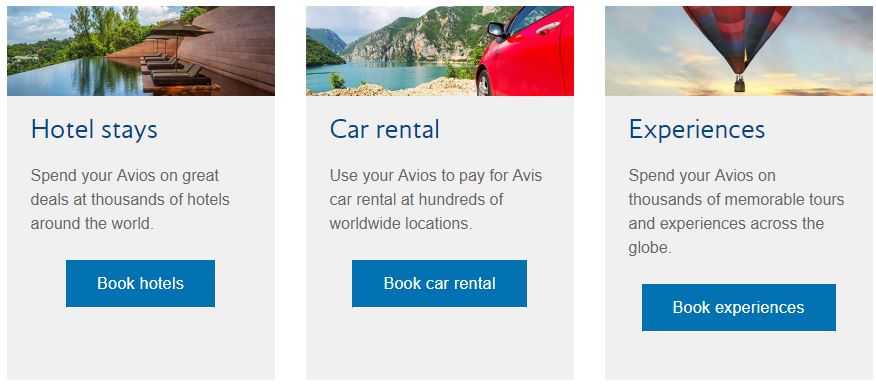
Suppose, for example, that I get to Shanghai and have time to get out of the airport for an excursion. Let’s further assume that I’ve earned a bunch of miles by then (for this example: British Airways Avios). I could use Avios to book something like this:
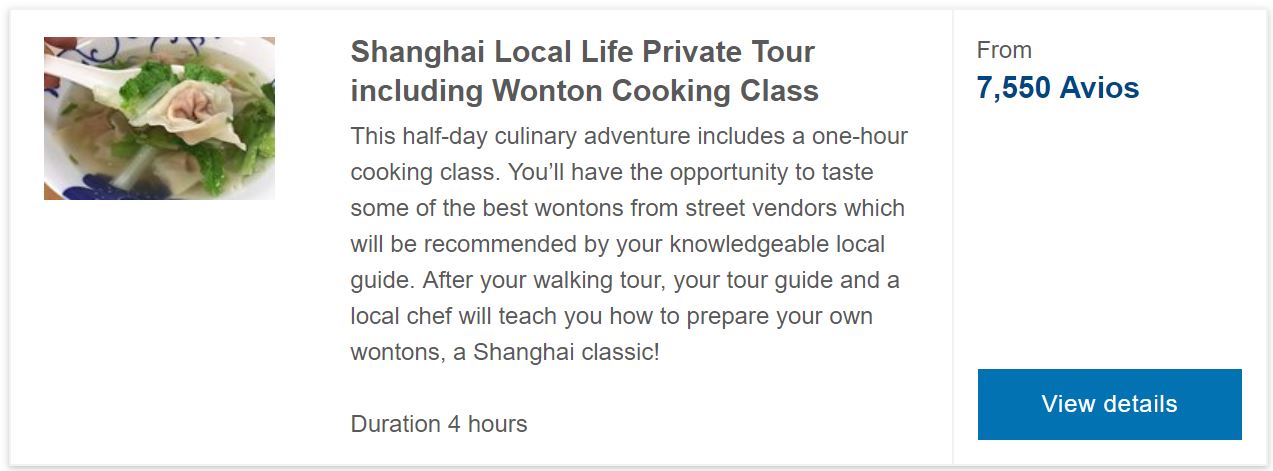
I have no doubt that the cash equivalent price for the above tour would mean that I’d be getting terrible value for my Avios. But still, this type of thing will let me experience things of interest, eat outside of the airport, and keep my meager budget intact.
And if I want to sleep somewhere other than on an economy red-eye flight, I could use Avios to book a hotel:

I chose British Airways Avios for this example, only because they provide the ability to book both hotels and experiences. A number of programs (such as AA and Alaska), let you book hotels and rental cars, but they don’t offer the option to book experiences (that I know of). The trick will be to find flight itineraries that let me credit those most miles to just one program and ideally one that offers experiences too.
In order to use my miles to help me get out of the airport and into the world, I will need the miles to show up quickly after each flight. I’ve read online that with some programs it can take up to a week for the miles to be deposited. However, in those cases, it is sometimes possible to get the miles right away by calling to request it. You can bet that I’ll do that. I’ll also want to schedule my longer layovers to be towards the end of the trip rather than the beginning so that I’ll be able to earn more miles along the way.
Wrap up
No Sam, Nick hasn’t yet won it all. I mean, yes, Nick found the most awesome award sweet spot ever, but that’s besides the point. I’m very much still in the game. I can (theoretically) go just as far as Nick or maybe even farther. And I have a secret weapon to help stretch my budget even more. But, despite all that, I do think that Nick is now the favorite. I’m certain that the Hawaii trick isn’t the only trick that he’ll pull out of his Fedora.
Finally, we have no idea at all about Stephen. Amex has some really great transfer partners. It won’t surprise me at all to learn that Stephen has also found some killer award deals.



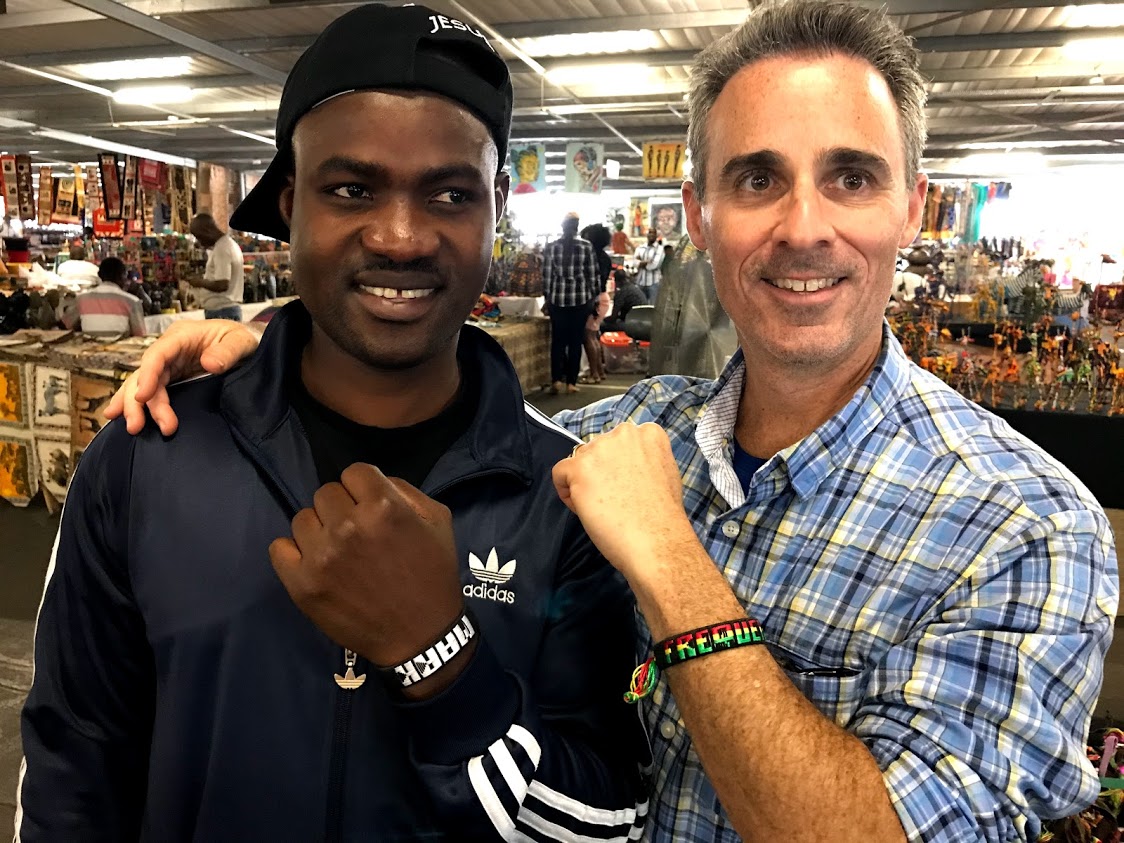
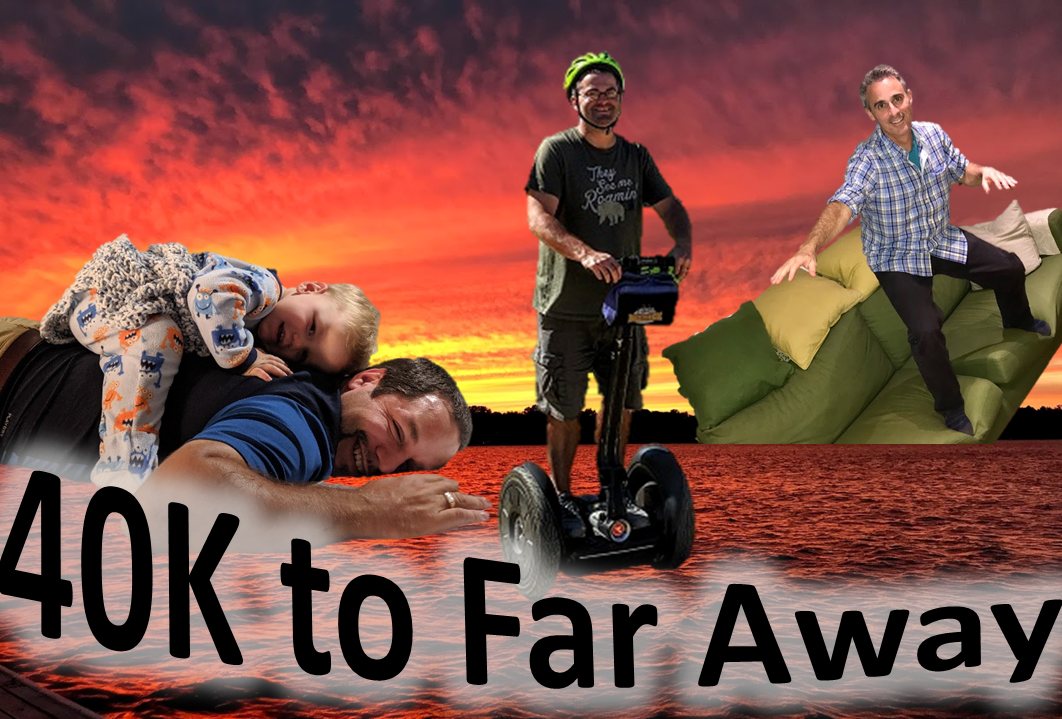
[…] I previously posted that I could have easily built a trip that covered 35,000 miles by nesting multiple cheap round trip flights, but it would have been a sucky boring trip. I opted instead to go far (just not as far) to awesome places and to build an awesome trip. […]
My $.02– of course this is neither my blog or my contest, but since your contest is lose on rules, so it could be “anything”…
I don’t think there is much merit to using a points and mile system like MR, UR or TYP to string together a series of events that could be found by subscribing to Scotts Cheap Flights and reading a backpackers blog to find ‘cool’ cheap events and then use your $450 annual fee CSR to pay 1.5% in points and declare victory. Of course this can be done, and while there is nothing ‘wrong’ in doing so, it’s not why I and I would guess the majority of your readers come to a blog like this. My vote would be for anyone that comes up with a truly unique and amybe undiscovered gem that is uniquely bookable with your currency of choice. Nick has done that and I would hope that what you Greg come up with will shine the light on why UR is an even better program for points collectors then TYP– which way to often gets a bad wrap as being “useless”. Same with Stephen with MR, come up womething col and unique that makes us want to accumulate MR or UR otherwise,really, what’s the point?
On what airline are you seeing those ultra cheap flights from Europ to US? If it’s Norwegian or some other similar, don’t forget the rapacious surcharges you’ll almost certainly have to pay.
If this works out, you should challenge Ben and Gary to the same contest for later this year. No help allowed, of course. It’d be great for Boarding Area. Now whether you could actually get them to fly in the back might be another story, but if you can do it, so can they.
That’s a nice touch using UR points at 1.5¢ to squeak some additional miles. I can see this giving Greg a nice edge in the competition. He’d be playing to the strengths of his points currency.
I love this competition and the way that the posts are highlighting the unique opportunities available to different points currencies. This is perhaps one of the most valuable and insightful series I have read, and I will continue to follow.
Based on one commenter, I’ve decided my blog regarding how far I could fly on the MOST miles possible has ended before starting. One only has to look at the Delta mileage chart
Hi Greg,
It’s “eke,” not “eek.”
Thanks and keep up the great work!
E
Eek! I’ve made the same mistake in the past! Thanks for letting me know. Fixed.
Are you all bringing your cell phones with you? Will you be including the cost for international data plans or other incremental costs of usage within your budgets?
Also, what about gratuities to service providers? There’s a gross incentive here for you all to skimp on tips in order to protect your budgets. It would be nice if you all agreed that $$ spent strictly on gratuities does not count towards the budget, to make sure that the hard workers who provide service to you along the way don’t get screwed in this very 1st world competition.
Great questions. We haven’t discussed either of these things, but here’s my take…
Cell phones: I believe we each have Google Fi and so our international data is included at no extra cost. So, I don’t think we should bother accounting for phone service.
Tips: I think that tipping (where expected) is part of the cost of travel so I’ve certainly budgeted for tipping in all of the scenarios I’ve considered. I’m open to the idea of taking tipping out of the equation for the reasons you expressed, but right now I’m assuming that tips are part of what we have to budget for.
I would like to think that none of the three of us is a big enough jerk as to not tip someone so that we could win a miles-and-points competition. If we budget poorly and have to decide between staying under $400 or going over-budget to $405 so our waiter gets a tip, I think each of us would probably admit to going $5 over budget and let the readers decide whether that totally disqualifies us or not.
I agree with Greg that it’s just part of travel and should count towards the budget, but i’m equally open to taking that out of the equation if that somehow eliminates doubt.
At some countries tipping is not required, for example Germany.
Yeah, great contest to emit tons of CO2 in a world of climate change just to prove a point…
Actually, that’s a good point. I don’t know if we will really add much CO2 to the environment since all the travel we do would happen with or without us. Regardless, I will look into the idea of buying carbon offsets for this contest.
Actually he’s just trying to make you feel guilty about enjoying the pleasure of travel. First let’s see airlines only sell economy seats and then I’ll start thinking of co2 offsets
How do you want to know? Or do you have a spare earth in case the original one becomes uninhabitable?
Besides… this is not about the pleasure of travel, at all. This is not about traveling to a place and spend a reasonable amount of time there and go home again, this is about a competition to prove a Point, nothing else.
It’s about competition and pleasure, did you not read the article in its entirety?
That is a typical way of guilt neutralization. If People wouldn’t fly, flights wouldn’t be scheduled. Every single passenger is part of the game. It’s as if you said: “If I’m not gonna buy this car, someone else will.” At the end of the day supply meets demand.
While I think Mike is being extremely harsh (hypocritical unless he is living off the grid and never flies), l I think modifying the challenge to require carbon offsets would be a great way to illustrate the environmental impact of air travel. You could compare itineraries before and after carbon offsets. Let’s see the true cost of travel including negative externalities.
Just wanted to echo the sentiment that this challenge is bringing out the best in this blog. This might be the best remaining travel hacking blog now that TPG, MMM have largely sold out. Keep up the good work!
[…] post My secret weapon #40Kfaraway appeared first on Frequent […]